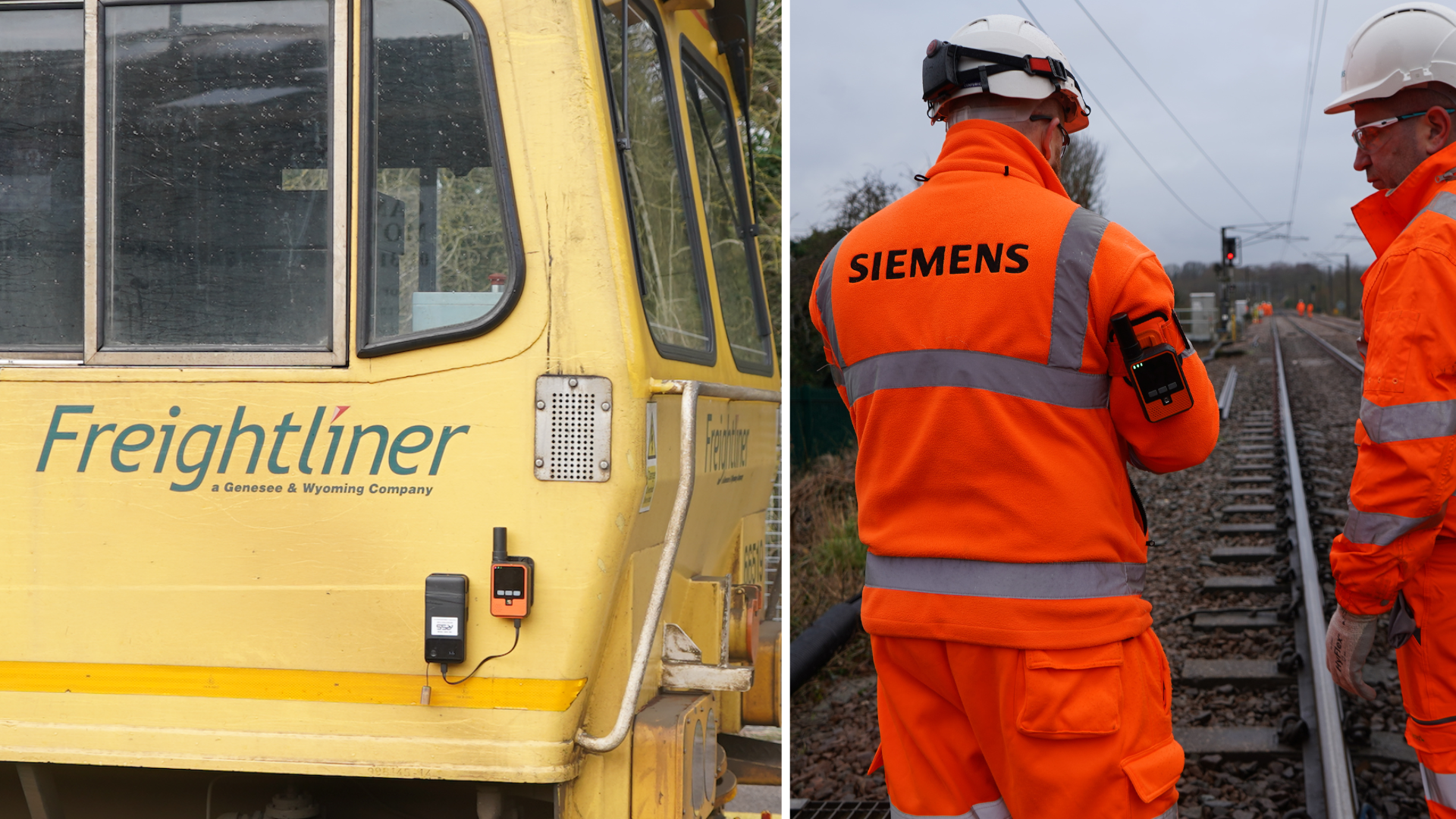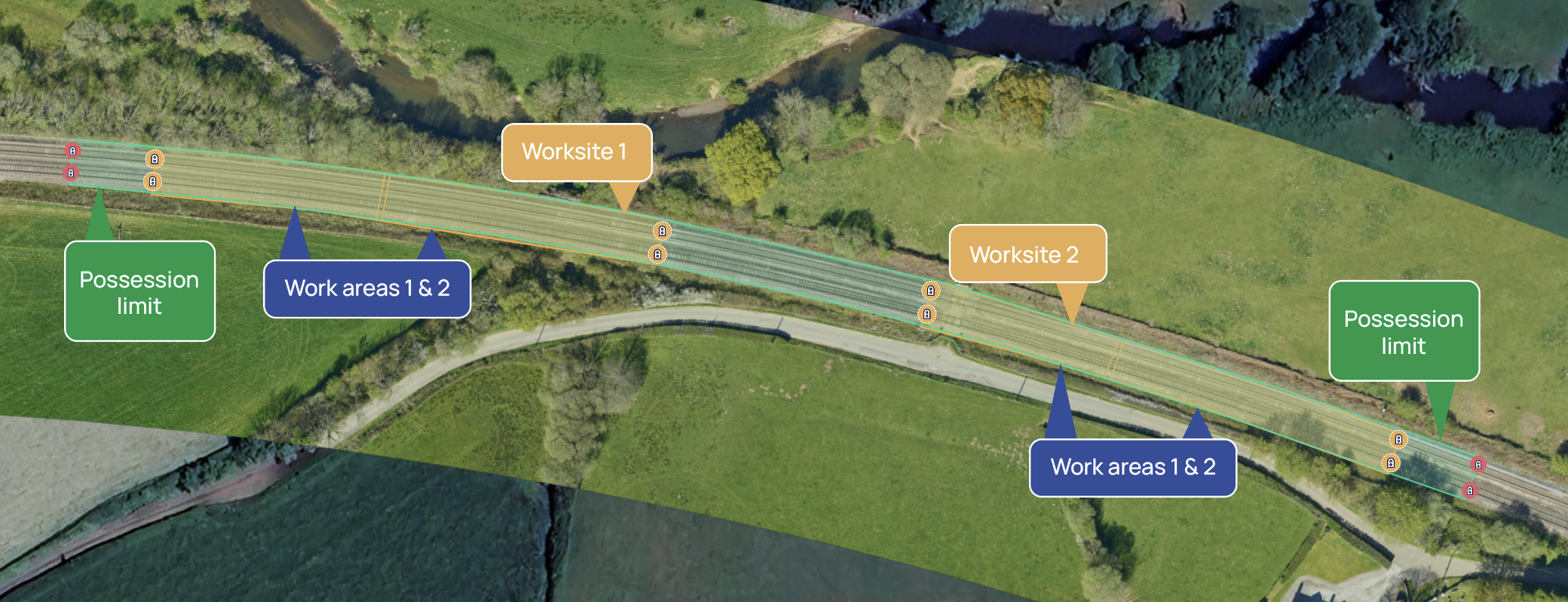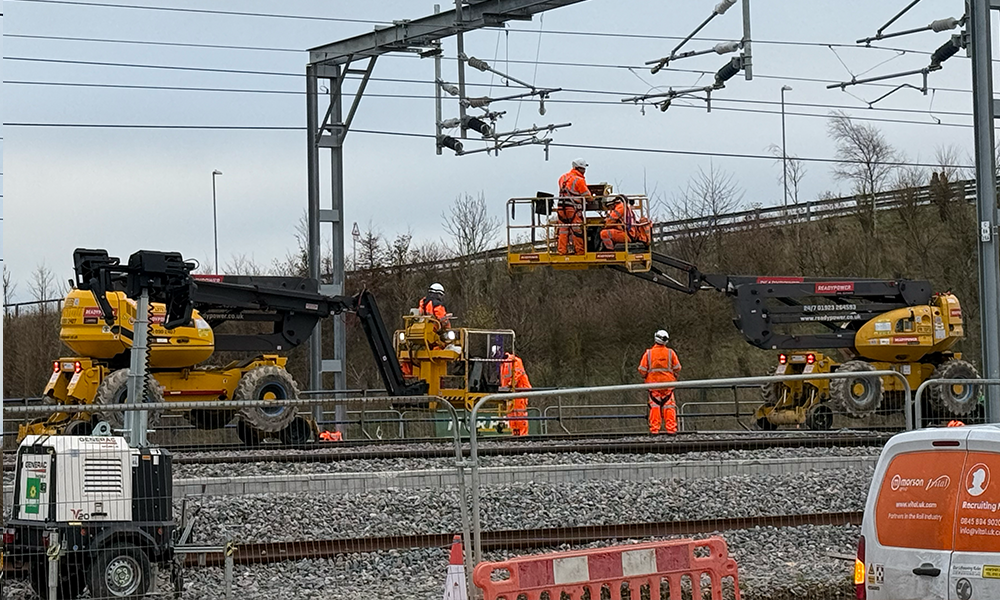Our monthly risk reduction series explores how geofencing technology can help mitigate specific safety incidents in the railway industry, offering practical insights and strategies for creating safer and more efficient work environments. In this edition, we cover how geofencing can be used to manage multiple worksites in a possession.
Due to the disruptive nature of large railway possessions, they are often planned to include multiple concurrent worksites to maximise efficiency, increasing the volume of work that can be completed within the time frame. Not only does this help to reduce the impact on network operations, but also helps keep Schedule 4 and Schedule 8 compensation payments to a minimum.
However, whilst efficient, managing multiple worksites within possessions presents a unique set of safety, planning and coordination challenges. Due to the already high-risk nature of railway environments, the complexity of these worksites introduces an enhanced risk of incidents, including possession irregularities, collisions, people plant interface issues, and infrastructure damage.
There are many possible factors that might contribute to this, for example:
- Miscommunication or use of outdated paper-based systems leading to confusion around worksite limitsHuman error caused by fatigue, distraction or complacency resulting in workers or machinery inadvertently straying outside of safe working limits
- Environmental factors including adverse weather conditions leading to reduced visibility or communications issues
People or plant leaving their designated worksite poses significant safety, operational and legal risks, including:
- Exposure to open lines and moving trains with the potential for near misses or serious accidents
- Conflicts with other workgroups conducting high-risk activities leading to injury or collisions
- Disruption to operations if the work has to be halted, possibly resulting in overruns
- Potential triggering of investigations, costing time and money, as well as the impact to the people subject to them
Fortunately, geofencing offers a method for enhancing the safety and coordination of these complex possessions, helping to ensure deconfliction and reduce the risk of such incidents.

How geofencing can be used to manage multiple worksites in a possession
1. Setting up the project
- Before a possession begins, a project is created using an online dashboard.
- Within this project, geofencing is used to draw virtual boundaries for each location including the overall possession area, individual worksites, and specific areas of work.
- Geofencing devices are then added to the project and assigned to the appropriate worksite or zone.
2. Managing people
- When workers arrive onsite, they are issued the geofencing devices assigned to their specific work area. This could be for an individual worksite, area within a worksite, or even for the entire possession if their role requires this.
- If a worker leaves their designated geofenced boundary, the device immediately triggers an alert. This alert notifies the wearer that they have stepped outside their safe work zone, potentially exposing themselves to danger.
- This allows them to self correct and move back into their area of work.
3. Managing OTP, OTM and Engineering Trains
- Geofencing devices can also be attached to OTP, OTM and Engineering Trains.
- If any plant or machinery leaves its assigned geofenced worksite, alerts are triggered instantly to local Machine Controllers (MCs) and surrounding workers.
- Simultaneously, the online dashboard displays a real-time alert for the Engineering Supervisor (ES) or Person In Charge of Possession (PICOP), who monitors a live digital map of the worksite or possession
- The ES or PICOP can then respond immediately to prevent potential safety risks.

A smarter approach to multiple worksite management
Managing multiple worksites within a possession is a complex task that requires careful planning and enhanced safety protocols. Geofencing technology is a powerful tool to meet these demands, providing virtual boundaries, instant alerts and real-time monitoring that help reduce the likelihood of people or machinery straying into unsafe areas.
By mitigating human error and allowing the early identification of unsafe events, geofencing significantly enhances project safety while supporting efficient project delivery and compliance. As the railway industry continues to embrace innovation, geofencing stands out as a practical approach to enhancing worksite safety, even in the most complex possession environments.




